
Recently on Cyclingnews.com |
Tales from the peloton, April 4, 2008
The Hellingen of the Ronde Van Vlaanderen 2008
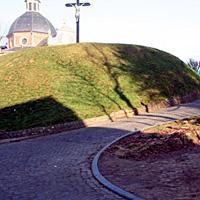
|
Between the start line in Brugge and the finish line in Meerbeke lie 264 kilometres of some of the toughest roads of northern Belgium. In addition to this, the race requires that the peloton traverses seventeen of the regions toughest climbs, the hellingen that make bike racing in this area so special. We produced the definitive guide for 2007, but the course changes from year to year. There was no alternative Cyclingnews' Ben Atkins has once again been out with his bike and his camera to produce an up to date guide for 2008.
1. Kluisberg
Length: 1250m
Ave Gradient: 5.3%
Max Gradient: 13%
Surface: Asphalt
Km from Start: 99km
Km from finish: 165km
On the approach to this first climb, the race route sneaks across the river Schelde and in doing so crosses the border into Wallonia. No passports are required as they're still in Belgium, but they may need phrase books because they speak French in this part of the country. It really should be called the Mont d'Enclus the Kluisberg's French name as we're climbing from the Walloon side, but this is the Tour of Flanders and so we don't use that language!
The Kluisberg has been a fairly regular feature in the last few years, but this is the first time it's been climbed from this side. It's usually much later in the race too so it should be treated entirely differently. It's longer up this side, and much less steep; where the other side starts gently and rears up at the top, this side is a much more even gradient. Once over the top, the course crosses the border back into Flanders, descending the way they usually come up.
This is far, far too early for anything other than a suicide attack from one of the race's also-rans. Anybody who's anybody will be sitting near the front to stay out of trouble, but there's no way they'll be showing themselves yet.
2. Nokereberg
Length: 375m
Ave Gradient: 5.9%
Max Gradient: 9.1%
Surface: Cobbles
Km from Start: 118km
Km from finish: 146km
This climb has only used once before, 2003, and then it was put in to break up the otherwise flat featureless journey from the start in Brugge to the real action in the hill zone to the south. This time though, the course takes a deliberate detour to the north to take this one in.
The Nokereberg is the main street up through the middle of Nokere, a village to the north of Oudenaarde. Given this fact, the gradient is pretty even all the way up more steep at the bottom if anything and so won't cause anyone any problems.
As with the Kluisberg, we're still way too far from the finish for an attack from anyone other than some unknown hopeful who wants to get his face and sponsor's jersey on television. It's also almost 40 kilometres to the next climb, so whoever does attack here had better be prepared for a long solo effort on the flat windswept plains that so typify this country.
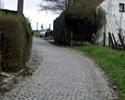
|
3. Molenberg
Length: 463m
Ave Gradient: 7%
Max Gradient: 14.2%
Surface: Cobbles
Km from Start: 157km
Km from finish: 107km
While it should be less of a shock because it's climb number three instead of number one where it has been for the last few years, this climb can take the uninitiated by surprise. The course is rolling along quite comfortably along a nice, flat, well-surfaced road when it suddenly takes a sharp right turn and is faced with a steep wall of cobbles. First time riders may find themselves almost grinding to a halt as they're stuck in too big a gear, simply because they weren't expecting it. The steepest section is near the middle before it begins to ease off and the cobbles give way to asphalt for the last few metres.
Despite being pretty steep, this is not the race's first exposure to uphill cobbles and there's not too much to trouble anyone here. Legs will be pretty fresh for all but the domestiques who've been doing all the work up to this point. The favourites will want to be near the front, because the climb is narrow and they won't want to be delayed behind any slower riders, but it's unlikely that any of them will show their hand at all this early on.
4. Wolvenberg
Length: 645m
Ave Gradient: 7.9%
Max Gradient: 17.3%
Surface: Asphalt
Km from Start: 167km
Km from finish: 97km
Turning off the long Kerkgate sector of cobbles, the course drops abruptly down to the village of Volkegem where it turns right to the bottom of the Wolvenberg. There's no gentle introduction to this one, it just rears up in front of you almost before you're ready for it and doesn't let up until you're nearly at the top where it gradually eases off.
As before, it's still far too early for a serious move from any of the favourites, but they will all be near the front and may well put in a bit of a dig just to see how the others react. The steepness will spell the end for some of the lesser riders and anyone who's been working too hard.

|
5. Oude Kwaremont
Length: 2200m
Ave Gradient: 4%
Max Gradient: 11.6%
Surface: Cobbles
Km from Start: 185km
Km from finish: 79km
Since they surfaced the main road (Nieuw Kwaremont), this climb has become a fixture in the Tour of Flanders. It's one of the most colourful parts of the race from a fans perspective, there are always thousands of fans lining the route as this, for many, is where the real race starts there are always caricatures of the local favourites, and heroes of the past dotted up the side of the road.
It twists gently out of Kluisberg before turning to cobbles and rising, the road levels out considerably as it passes through the village of Kwaremont, before rising up again on the way out.
With a maximum gradient of 11.6%, it's not going to put too many riders in trouble, apart from those who are already getting tired, but the mere fact that it has 1600m of uphill cobbles really makes this one felt. Generally this is the point where one of the stronger teams starts to gently turn the screw by putting a few men on the front and increasing the pace a notch. This is to jettison as many of the weaker riders as possible, but also to get their man into a good position for the next climb where things start to get serious.
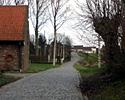
|
6. Paterberg
Length: 360m
Ave Gradient: 12.9%
Max Gradient: 20.3%
Surface: Cobbles
Km from Start: 189km
Km from finish: 75km
This one is a real monster. The riders turn a sharp right-hander at the bottom and it just rears up in front of them. With a maximum gradient of over 20 percent it gets steeper and steeper and doesn't seem to let up until the top and it's cobbled all the way up. The one saving grace is that it's mercifully short, and also, due to it's exposed position it dries pretty quickly, so if it's showery then it doesn't stay too slippery for long.
This is a real fans' favourite hundreds (even thousands!) of people try to squeeze into the small areas at the sides and top it's got so crowded that the organisers have had to put high fences up, not to stop the riders going off course, but to prevent the fans from spilling on to the narrow cobbled surface.
With 76 kilometres still to go, it's still a bit early for a race-winning move to get clear, but its ferocity is usually too much for some to resist. There may well be a dig from one of the favourites probably the one whose team was putting the pressure on the Oude Kwaremont but there is still the Koppenberg to come so they may well bide their time. An attack, if it does go ,may have the effect of pulling a smallish group clear any favourites missing this split will have to get their team to do an awful lot of work to get them back, and they may well find that they've missed the boat.
The road is very narrow for a peloton that may well still be up to 150 strong, so expect to see the ones at the back having to walk if it's wet, then it will be chaos.

|
7. Koppenberg
Length: 600m
Ave Gradient: 11.6%
Max Gradient: 22%
Surface: Cobbles
Km from Start: 195km
Km from finish: 69km
It's back! They removed it from the course after most of the peloton had to walk up in 2006, and the surface was proclaimed dangerous again. It's been recently resurface reputedly by relatives of Peter Van Petegem and has been pronounced safe again.
Most famous for the incident in 1987 where a solo Jesper Skibby was being reeled in by the bunch when he literally keeled over on the steep cobbled surface when he ground to a halt and couldn't get out of his toe-straps. The commissaire's car was so nervous of holding up the approaching peloton that it ran Skibby's bike over and almost the rider into the bargain.
This climb is never without incident, it's so steep and so narrow that what's left of the bunch after the Paterberg always has problems squeezing up it all at once. The steepest part is between trees and has banks on either side and so is often still damp when everything else in the area is dry. There also used to be an issue with water trickling on to the surface from the surrounding fields, but when Cyclingnews visited in early March this problem appeared to have been solved.
Last time the climb was used in 2006, Tom Boonen put in a strong dig that only a few riders were able to follow. The remainder of the peloton were forced to get off and walk and that group was never seen again. For this reason, the favourites will want to be not just on the front, but actually at the front as they get to this one. Miss the break here and you've lost the race.
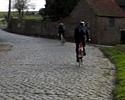
|
8. Steenbeekdries
Length: 700m
Ave Gradient: 5.3%
Max Gradient: 6.7%
Surface: Cobbles
Km from Start: 200km
Km from finish: 64km
The only difficulty facing riders on this climb is the fact that it is cobbled and comes at the end of a flat stretch of cobbles that will give stronger teams the opportunity to put the hurt on those riders who aren't so proficient at riding them. What's more frightening is the descent down the other side, a straight cobbled road that's steeper than the one they just climbed up so much so that, if the direction of the course didn't dictate it, you'd expect them to be racing up this side (in fact, when this climb was first introduced in 2002, fans of Nico Mattan painted his name on the downward side assuming that the course would climb up that way).
If conditions are wet then this descent is potentially pretty dangerous, but even in the dry it will be shaking water bottles loose all over the place, so great care is needed. To add a bit of extra spice, the road turns sharply at the bottom of the still cobbled road so that it can cross a railway line.
Due to the potentially treacherous nature of the descent, staying out of trouble is key here for the favourites. If they're already in a smallish breakaway group they'll feel more comfortable because they'll have fewer potential hazards from other people's bottles or crashes.
9. Taaienberg
Length: 530m
Ave Gradient: 6.6%
Max Gradient: 15.8%
Surface: Cobbles
Km from Start: 203km
Km from finish: 61km
This is a pretty little climb that rises through a wooded area, but is also a real leg zapper. It is cobbled all the way to the top, but there is a smooth gutter up the right hand side that riders often ride up in the places where it's free of mud. The steepest section is in the middle, but the cobbled surface prevents it from ever becoming particularly comfortable.
Still too far out to be decisive, this climb usually has the effect of weakening and slowing down any early attackers who have managed to stay away until now. Everyone else will be doing their best to stay out of trouble and get up the steep cobbles with as little effort as possible.

|
10. Berg te Stene
Length: 1300m
Ave Gradient: 5.0%
Max Gradient: 10.7%
Surface: Asphalt
Km from Start: 213km
Km from finish: 51km
Brought in as a different way of getting from one side of the main Oudenaarde to Brakel road to the other, the Berg Te Stene is a replacement for the combination of Eikenberg and Boigneberg that has featured in previous years. Its inclusion at the expense of the Eikenberg particularly has not been popular with some, as it means one less cobbled climb.
It has previously been used in 1957 and 1958, but in those days it was cobbled. Nowadays it's just a winding asphalt road; the surface isn't great, but neither is it too uncomfortable. The gradient doesn't present too many problems either, only approaching anything like steepness in the midsection. There may be an attack here though or at least an acceleration to soften up the opposition; firstly as that would ordinarily happen on the Eikenberg, but also because many riders won't have experienced this climb before and locals might want to exploit this.
11. Leberg
Length: 950m
Ave Gradient: 4.2%
Max Gradient: 13.8%
Surface: Asphalt
Km from Start: 216km
Km from finish: 48km
This is a pretty little road that winds up past some farms on the outskirts of Brakel. The steepest part is in the middle, but the top half can get pretty exposed, so the Flemish wind can come in to play here.
As there's now less than 50 kilometres to go there may be some serious attack put in by one or more of the favourites at this point. No one will want to try to ride to the finish on their own from this point but a rider that fears sprinters like Boonen may try and drag a couple of like minded colleagues with him. If three or four get away here and work together, it would take a concerted and organised effort behind to get them back.

|
12. Berendries
Length: 940m
Ave Gradient: 7%
Max Gradient: 12.3%
Surface: Asphalt
Km from Start: 222km
Km from finish: 42km
Another nasty one given the kilometres already covered, Berendriesstraat rises out of the village of Sint-Maria-Oudenhove, in the district of Brakel. Unlike the preceding climb that was of a similar length, this one starts gently and gets steeper, then holds its gradient right to the top.
Anyone who attacks on this one had better have it in their legs to keep going to the top, this climb seems to go on interminably, the pressure doesn't let up until right at the top where it suddenly descends, seemingly with no flat on the top at all. Because of this, a climber may well try and put the hurt on any sprinters still present and take one or two with him.
13. Valkenberg
Length: 540m
Ave Gradient: 8.1%
Max Gradient: 12.8%
Surface: Asphalt
Km from Start: 227km
Km from finish: 37km
Not to be confused with ValkenBURG, the town in the Netherlands that hosts the finish of the Amstel Gold Race. This climb was reintroduced in 2005, after a break of many years, to break up what would have been a flat stretch of over ten kilometres. Positioned as it is it serves to break the rhythm of the race, and provide an umpteenth opportunity for riders to attack as they approach the closing stages of the course.
The climb itself is fairly unremarkable, but for the fact that it's the thirteenth one of the day and weaker riders will be becoming less and less able to respond to the pressure put on them by the strong ones.
It was here in 2006 where Tom Boonen responded to an attack by Leif Hoste and the pair of them broke clear to stay away to the finish, where of course Boonen took an emotional second consecutive victory, while in the rainbow jersey of World Champion.
14. Tenbosse
Length: 455m
Ave Gradient: 6.4%
Max Gradient: 8.7%
Surface: Asphalt
Km from Start: 233km
Km from finish: 31km
Tenbossestraat is a long, almost completely straight street in the suburb of Nederbrakel (local riders include Australian Robbie McEwen), and while it never gets particularly steep it can still provide the springboard for a decisive attack.
In 2003, Johan Museeuw put in a dig here that was immediately countered by his great rival Van Petegem, this spelt the end or Museeuw and Van Petegem got across to the lead group from which he was to emerge victorious in the first part of his historic Flanders-Roubaix double.
If there is still a group together at this point they will be very watchful of each other in case the events of 2003 are to repeat themselves, but someone will probably have a go at something.
15. Eikenmolen
Length: 610m
Ave Gradient: 5.9%
Max Gradient: 12.5%
Surface: Asphalt
Km from Start: 239km
Km from finish: 25km
Introduced for the first time last year to break up the otherwise flat 17 kilometres between Brakel and Geraardsbergen, the Eikenmolen provides yet another chance to attack or put pressure on rivals before the race gets to the Muur.
The climb starts relatively gradually, but then steepens as it passes its midsection and holds that gradient right up to the top. Again, the cumulative effect of the number and frequency of climbs will tell more than the specific severity of this one.
Anyone left in the front group who's not too confident about the Muur may well make a move here, especially if Boonen is isolated from his team. Last year, Fabian Cancellara led the break over the top of this one, but his efforts were ultimately fruitless with too many favourites just behind.
If a solo rider does manage to escape here though, and they've managed to avoid doing too much work, they may even be able to get to the finish alone as there are less that 30 kilometres to go, but it's unlikely that they would be allowed to.
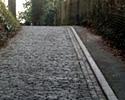
|
16. Muur - Kapelmuur
Length: 475m
Ave Gradient: 9.3%
Max Gradient: 19.8%
Surface: Cobbles
Km from Start: 249km
Km from finish: 15km
The Muur, meaning 'The Wall,' rises out of the town centre of Geraarsbergen. Sometimes mistakenly called the "Mur de Grammont," which is the French name (a lot of towns in Belgium have a French and a Flemish name, e.g. Bruges/Brugge - ed.) but that's a language that is definitely not spoken around here!
The climb through the town is never too severe, until it reaches the actual Muur itself, which is normally closed to traffic. The road swings left around that oft-pictured bend and suddenly riders see how the climb got its name as it rises to 19.8%. It's only a mercifully short section though before it levels out, but then it steepens once more to tackle the short sharp rise that is the Kapelmuur. Once over the top, the cobbles end, and the road drops down almost as sharply as it came up.
The Muur is a fixture in Flemish bike racing (many of the other great races climb it at some point during their course) and, while not always decisive, it's always proved eventful. In recent times attacks on the Muur led to the victory of Alessandro Ballan last year, and also Stefan Wesemann (2004) and Peter Van Petegem (1999 & 2003). In all cases they managed to pull a rider or two with them to share the last sixteen kilometres or so before taking victory in a small group sprint.
The 1999 attack for Van Petegem came just as the rest of the group including Erik Zabel, Frank Vandenbroucke, Andrei Tchmil and Michele Bartoli were taken out by the slippery surface on a corner, allowing him and Museeuw to escape. Only Vandenbroucke had the legs to catch the two old rivals, but he had no answer to Van Petegem in the sprint.
Last year's move by Alessandro Ballan came just before the steepest part and, of a very select group of favourites, only Leif Hoste could follow. The two of them managed to stay clear all the way to the finish where Ballan was ultimately victorious, giving Hoste his third second place in four years.
The surface was pronounced dangerous after the 2002 race and was resurfaced in time for the next year. Some said that this took away a lot of its character, but time and the Belgian climate are rapidly restoring this. Even so, a 19.8 percent section of cobbles at this stage of a race will always prove a challenge. If more than one rider reaches this point together, there will be an attack! Flanders expects, and it may be the last chance to shake Tom Boonen...
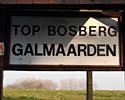
|
17. Bosberg
Length: 980m
Ave Gradient: 5.8%
Max Gradient: 11%
Surface: Cobbles
Km from Start: 252km
Km from finish: 12km
This is the last one, if you're just here to get to the finish, then once you're at the top of this one, you know you've made it. For the ones looking for a result, this is one of the last places to put in a serious attack, for the better climbers to try and escape the sprinters and rouleurs.
Rising through a wood (where it gets its name, 'bos' means 'wood') on the way out of the district of Geraardsbergen, it's not really steep enough to put anyone in trouble unless their legs are really tired and it hasn't produced a decisive attack for several years. In both his victories (1989 and 1991) Edwig van Hooydonck used the Bosberg to escape his breakaway companions and soloed away to win, because of this he became known as Edwig Van Bosberg. The climb itself has not been quite so influential since then and is simply a further obstacle on the way to the finish. Nevertheless, riders in the front group will be watching each other like hawks because a Van Hooydonck style attack is still possible.
If a rider does manage to escape here then it's only twelve predominantly flat kilometres to the finish in Meerbeke, and staying away is a real possibility. Failing that, there is still plenty of opportunity to get away on those last few kilometres, as shown by Andrea Tafi (2002) and Tom Boonen (2005) who both managed to escape a group of favourites by putting in powerful attacks on the flat roads of the run in.
Photography
For a thumbnail gallery of these images, click here
Images by Ben Atkins/Cyclingnews.com
- The Kluisberg from the south is not so steep as from the usual northern side.
- The Kluisberg snakes gently to the top where it crosses back into Flanders.
- The climb's real name on this side of the border is in French.
- The Nokereberg is the main street through the village of Nokere.
- Because it's a main street the Nokereberg's gradient never gets too steep.
- The Molenberg can take you by surprise if you're not expecting it!
- The steepest section of the Molenberg comes at halfway up.
- The Wolvenberg just rears up at you but eases up after halfway.
- The Oude Kwaremont has been a fixture of the race since the mid 1970s.
- The steep cobbles ease off a bit as it passes through the village of Kwaremont.
- But then it gets steeper again on the way out and seems to go on for ever.
- Nothing subtle about the Paterberg the course turns sharp right and presents you with this!
- If you can't see how steep the road is just look at the fence - the Paterberg is a monster!
- It's back! The Koppenberg stretches out before them.
- The steepest part of the Koppenberg is shaded by trees and banks and so often stays damp when all else is dry.
- Once you're past the steepest part of the Koppenberg, it keeps on going and never seems to let up until you reach the top.
- Steenbeekdries is harder to say than it is to climb...
- ...and it's pretty scary on the way down the other side! Look out for flying bottles - and riders!
- The Taainberg is quite pretty but that doesn't make it any easier!
- The Berg Te Stene is neither steep nor cobbled.
- The inclusion of the Berg Te Stene at the expense of the Eikenberg was not a popular decision in some quarters.
- The Leberg snakes its way through farms and hamlets.
- Even once you've passed the steepest part of the Leberg it keeps on going and also exposes you to the wind.
- Berendries starts fairly gently but then gets steeper and steeper.
- Berendries doesn't let up until you're right at the top where it drops away almost instantly.
- The Valkenberg wouldn't normally cause any problems, but it comes after 227km of racing.
- This was the point where Leif Hoste attacked in 2006, taking World Champion Tom Boonen with him.
- Tenbosse rises out of Nederbrakel.
- You can see how steep Tenbossestraat is by looking at the houses!
- The Eikenmolen gets steeper just as it crosses the main Brakel to Ninove road.
- Once it's kicks the Eikenmolen keeps going to the top.
- The Muur is not too steep until you get around that corner...
- ... where it rears up at you (They resurfaced this bit in 2003, but it's getting its old character back)
- One last steep ramp takes you over the Kapelmuur.
- The Bosberg rises up through a wood on the way out of the district of Geraardsbergen.
- Top Bosberg the climbing is over for the day - only 12km to the finish and only flat roads left to attack on,
